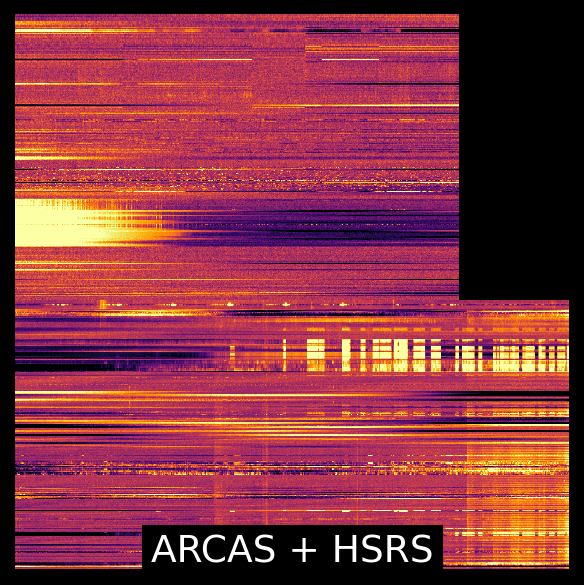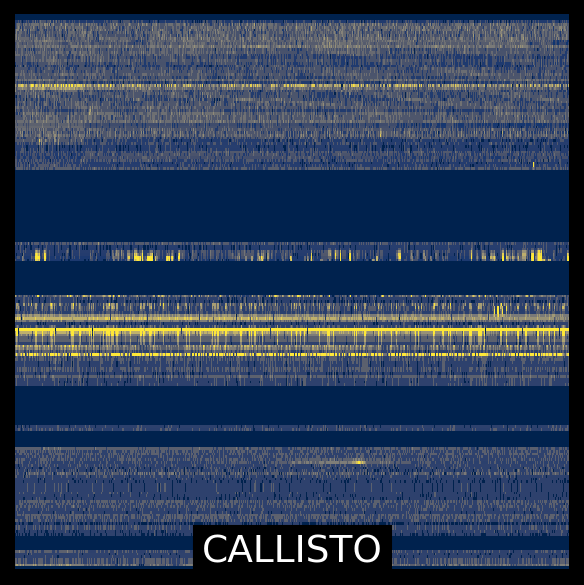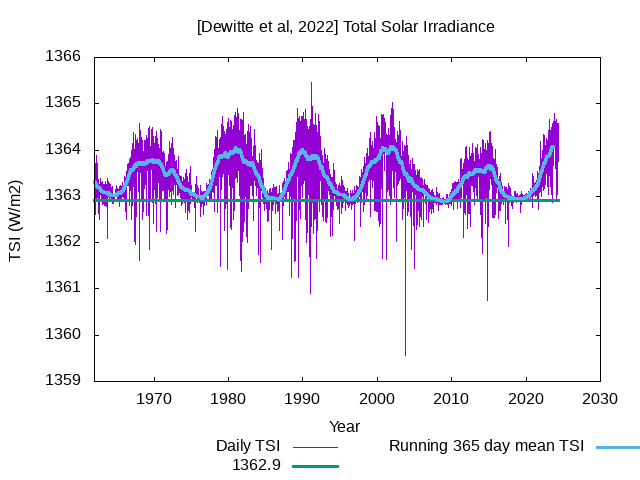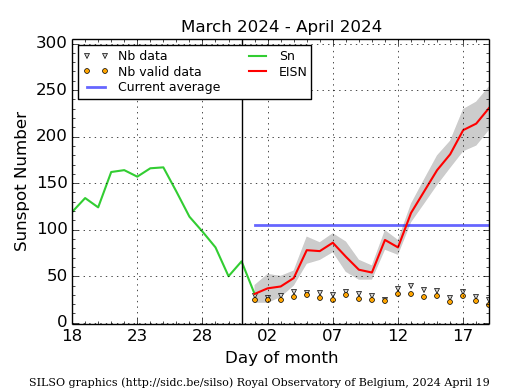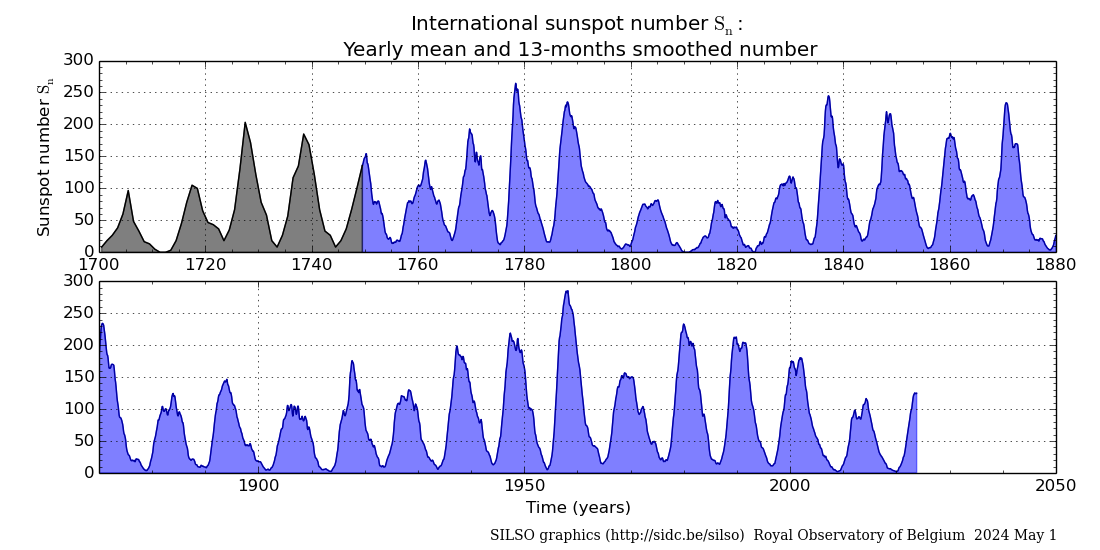Solar flaring activity was high during the last 24 hours with almost all registered activity emitted from NOAA Active Region (AR) 3664 (magnetic configuration Beta-Gamma-Delta, Catania sunspot group 86). The most notable activity was an X1.0 flare detected yesterday at 16:26 UTC, an M6 flare today at 09:44 UTC and an M4 yesterday at 20:32 UTC. NOAA AR 3676 (magnetic configuration Beta-Gamma) and 3679 (magnetic configuration Alpha) became active during the past 24 hours, producing an M1 flare each. Further M-class flaring activity is expected from NOAA AR 3664 and probably from NOAA AR 3676 and 3679. X-class flaring activity form NOAA AR 3664 is also possible in the next 24 hours.
No Earth-directed Coronal Mass Ejections (CME) were observed in the last 24 hours.
Two CME observed yesterday at 02:00 UTC and 03:48 UTC are not likely to be Earth-directed.
The greater than 10 MeV proton flux, as measured by the GOES-18 satellite, continue its drop and was below the 10 pfu threshold level during the last 24 hours. It is likely that it will continue its gradual drop in the next 24 hours, however, there is a chance of a new proton event and an increase in flux above the alert level.
The greater than 2 MeV electron flux, as measured by the GOES-18 satellite, was below the 1000 pfu alert level during the last 24 hours and is expected to remain below this threshold during the next 24 hours. The 24h electron fluence was at low levels during the past 24 hours and is expected to remain at these levels for the following 24 hours.

